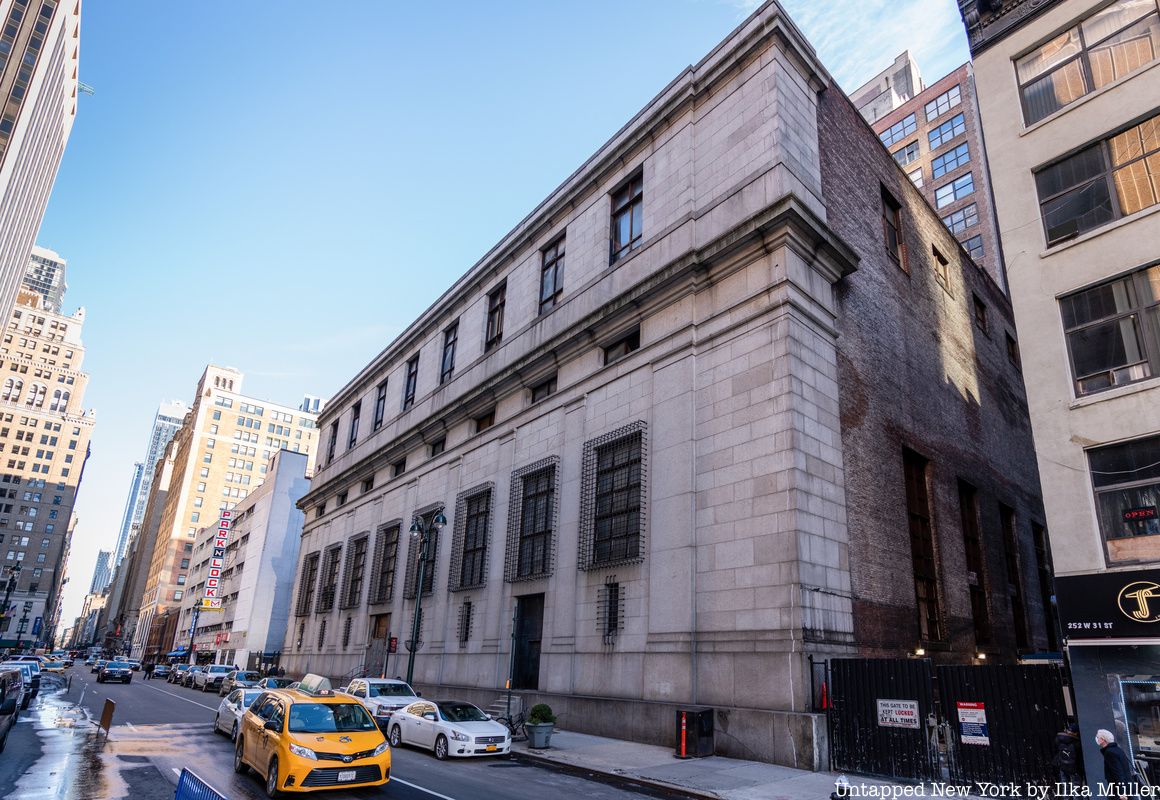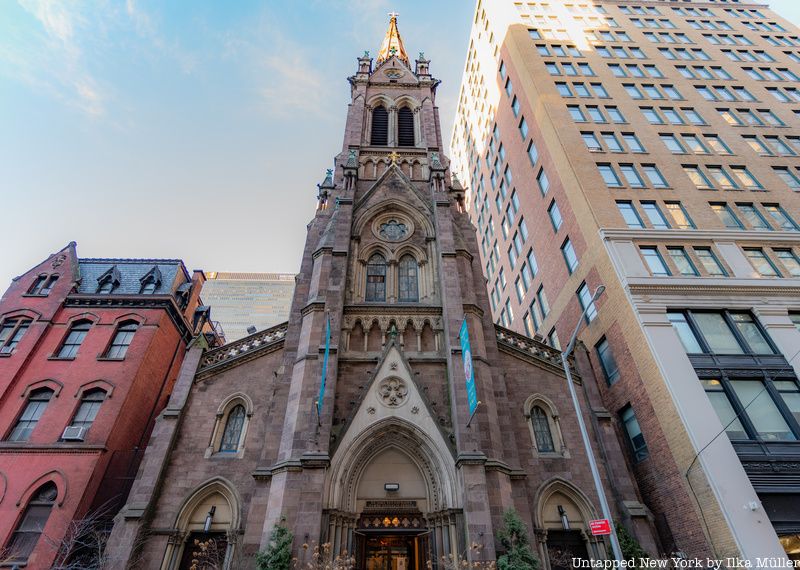Last-Minute NYC Holiday Gift Guide 🎁
We’ve created a holiday gift guide with presents for the intrepid New Yorker that should arrive just in time—


Monasteries may not be an institution synonymous with New York City, but as we’ve shown, they are certainly a presence. Still, most retain a bucolic presence, even within urban or industrial zones. One exception is the Capuchin Monastery of the Church of St. John which sits on 31st Street just next to Penn Station and Madison Square Garden. In this ramshackle stretch of no man’s land you’ll find a loading dock to MSG, the forgotten power station of the original Pennsylvania Station, and an unabashed homeless presence.
Not surprisingly this portion of 31st Street has come up in the city’s redevelopment plans several times. As of January 2015, Amtrak hoped to demolish the entire block and replace it with a rail station for New Jersey commuters, to be called Penn South.
 Former Penn Station Power Plant
Former Penn Station Power Plant
The block was originally targeted as part of the Access to the Region’s Core (ARC) project when it originated in the 1990s. The existence of the monastery and the power station became a stumbling point. “That’s one of the reasons why we rejected that block,” said David Widawsky, project lead for ARC. “It’s an historic church, and the only piece of Penn Station that’s still standing.” Actually, it’s not the only piece of the old Penn Station, as we show on our popular monthly tour of the Remnants of Penn Station, but the largest.
Amtrak owns the former power plant of Pennsylvania Station, and without landmark status, the building can probably be demolished particularly in its declining state–though Amtrak is sure to get preservation pushback. The monastery is a different story, with relics of Padre Pio, a saint canonized by John Paul II. Padrio Pio is said to have suffered stigmata throughout his life, a recreation of the bleeding of Christ on the cross. He was well-known among soldiers in Italy during World War II.

Church of St. John the Baptist, at 213 W 30th Street. The monastery sits behind it on 31st Street.
After Pio’s death in 1968, the Church of St. John acquired some of his relics including a dark red fingerless woolen glove and white linen sock, stained with his blood. On special occasions, the church also displays Pio’s crystal cruets, his fountain pen, a photo of the Saint with him writing with the same pen, a cloth used to absorb the blood from his stigmata, which still bears the stain, a scab of the stigmata, and some of his hair. These sit on the church side of the property, which is accessed on 30th Street, but devotees do live in the monastery on 31st Street.
As the battle for a new Penn Station continues, Amtrak is already working and preservationists and New Yorkers should pay close attention to what happens along this nondescript block with these gems hidden in plain sight.
Join us for our next tour of the Remnants of Penn Station, which uncovers remnants along this street and inside the current station. Get in touch with the author @untappedmich.
Subscribe to our newsletter